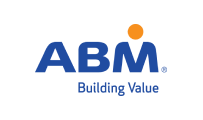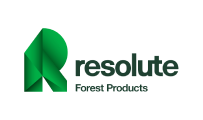The green building world is undergoing a transformation. In 2025, the U.S. Green Building Council (USGBC) unveiled LEED v5, the most significant update to the Leadership in Energy and Environmental Design (LEED) certification since its inception. LEED v5 sets a bold new direction—focusing on decarbonization, climate resilience, and social equity in the built environment.
Why LEED v5 Matters in 2025 and Beyond
LEED has long served as the global benchmark for sustainable buildings. But amid intensifying climate risks, growing energy demands, and rising social inequities, LEED v5 redefines what it means to build sustainably.
What Sets LEED v5 Apart?
-
📉 Carbon as the Core Metric
For the first time, carbon emissions—not just energy efficiency—form the centerpiece of the certification process. LEED v5 encourages whole-life carbon analysis, rewarding projects that reduce both operational and embodied carbon. -
🌪️ Resilience Planning
Projects must now demonstrate their ability to withstand climate impacts, such as extreme weather, rising temperatures, and disruptions to energy or water infrastructure. -
⚖️ Social Equity and Health
LEED v5 embeds equity and health principles throughout the certification process, requiring teams to address community impacts, healthy materials, and inclusive design.
This evolution aligns LEED v5 with growing demands from investors, governments, and communities for buildings that are not only efficient but also resilient and equitable.
Key Changes in LEED v5: What Practitioners Need to Know
Whether you’re a sustainability professional, architect, or facility manager, here are the most important updates to keep in mind:
🌍 Carbon-First Approach
All projects must now disclose and reduce carbon emissions across the building life cycle. LEED v5 rewards innovations like mass timber, low-carbon concrete, and on-site renewable energy integration.
🛡️ Mandatory Resilience Planning
Projects are required to perform a climate risk assessment and develop strategies for climate adaptation, addressing factors such as flood risk, heat stress, and grid reliability.
📊 Performance-Based Design
LEED v5 introduces real-time performance tracking and promotes operational transparency, aligning with emerging ESG reporting frameworks.
🏙️ Equity and Community Engagement
Stakeholder engagement, occupant well-being, and access to public services are now integral to certification. LEED v5 ensures buildings contribute positively to human and community health.
How LEED v5 Supports Global Climate Goals
As the U.S. and global economies work toward net-zero emissions by 2050, LEED v5 plays a critical role by:
-
Incentivizing strategies that reduce Scope 1 and 2 emissions
-
Beginning to integrate Scope 3 thinking through supply chain and materials choices
-
Supporting compliance with SEC climate disclosures and local green building mandates
LEED v5 offers a clear, science-based roadmap for municipalities, institutions, and developers aiming to align their portfolios with climate goals.
Training the Next Generation of LEED Professionals
With so many transformative updates, staying current is essential. CSE’s Certified Sustainability Practitioner Program (Leadership Edition 2025) reviews the latest legislative changes impacting broader ESG strategies.
Conclusion: LEED v5 Signals a Green Building Revolution
LEED v5 is more than just an update—it’s a revolution in green building. It addresses the urgent need for climate action while also embracing health, equity, and long-term resilience.
As climate, health, and justice shape the sustainability agenda, LEED v5 provides a practical and rigorous pathway to meet those challenges.
Whether you’re a developer, consultant, or sustainability officer, understanding and applying LEED v5 is now essential.
The buildings of tomorrow must be more than efficient—they must be resilient, regenerative, and just.







